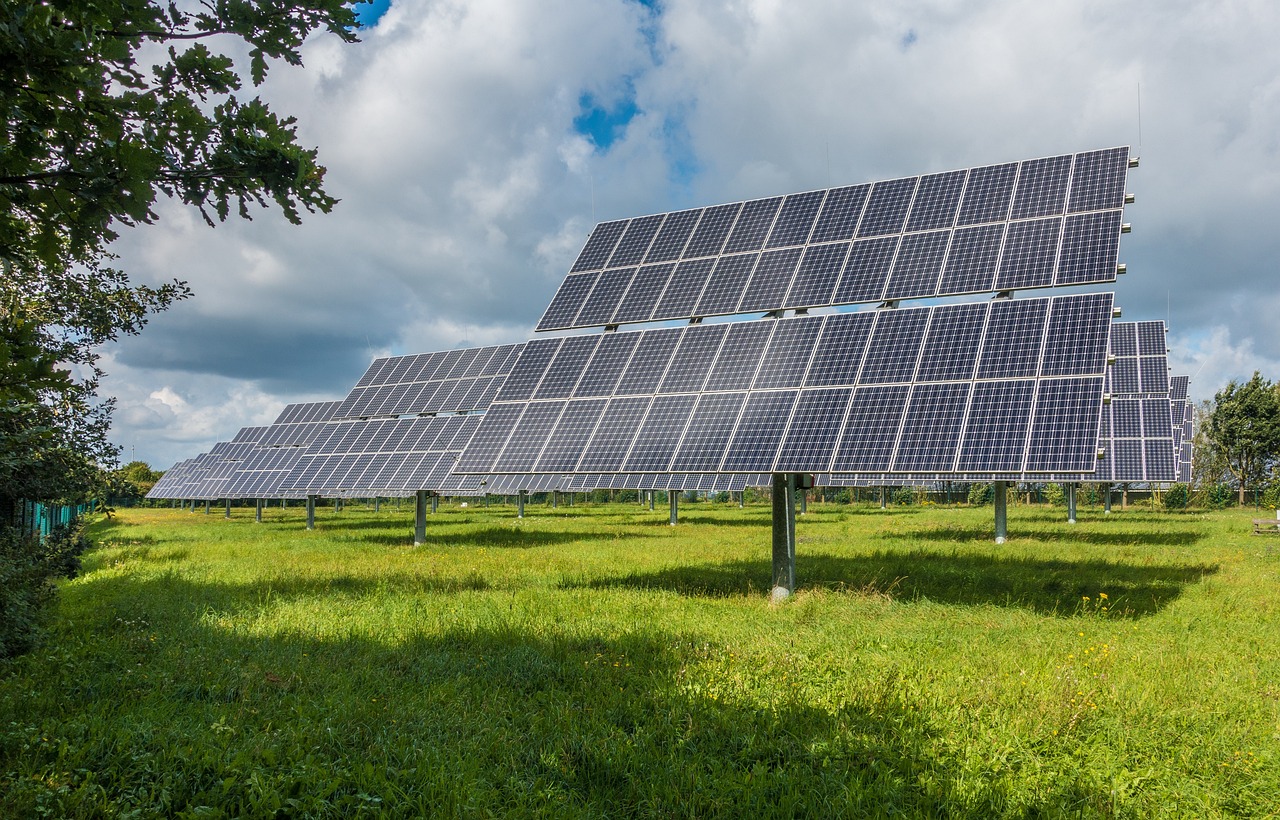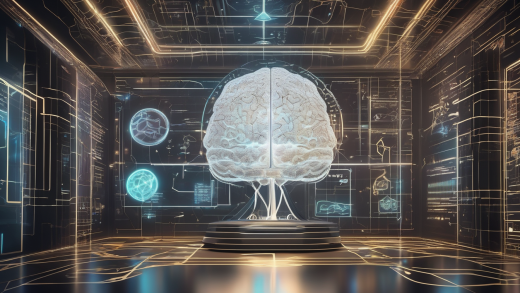Artificial Intelligence (AI) is revolutionising the way we approach renewable energy forecasting. As the world shifts towards sustainable energy sources, the need for accurate predictions becomes paramount. Imagine trying to navigate a ship through foggy waters without a compass; that’s what energy producers face without reliable forecasting. AI serves as the lighthouse, guiding them through uncertainties by providing data-driven insights.
In essence, AI enhances the forecasting process by analysing vast amounts of data, identifying patterns, and making predictions that were previously unimaginable. This technology is not just a luxury; it’s a necessity for optimising energy production and consumption. Accurate forecasts can lead to improved grid stability and significant cost reductions, making renewable energy more viable and appealing to both producers and consumers.
Moreover, the integration of AI in energy forecasting is akin to upgrading from a bicycle to a high-speed train. The speed and efficiency with which AI processes information allow for real-time adjustments and better decision-making. In this article, we will explore various methodologies employed by AI in this domain, the benefits they bring, and the challenges that still loom over the horizon.
As we delve deeper, we will uncover the specific AI techniques like machine learning and neural networks, which are at the forefront of transforming energy forecasting. These technologies not only enhance prediction accuracy but also contribute to the overall efficiency of energy systems. So, buckle up as we embark on this enlightening journey through the world of AI and renewable energy forecasting!
The Importance of Accurate Forecasting
Accurate forecasting is the backbone of renewable energy systems. In a world increasingly reliant on sustainable energy, the ability to predict energy production and consumption accurately is essential for optimising grid stability and reducing operational costs. Imagine trying to fill a bathtub without knowing how much water is coming from the tap; without precise forecasts, energy providers face similar challenges in managing supply and demand.
By utilising accurate predictions, energy producers can ensure that they generate enough power to meet consumer needs while minimising waste. This not only leads to significant cost savings but also enhances the reliability of energy supply. For instance, renewable energy sources like wind and solar are inherently variable, making precise forecasting critical. When energy production aligns closely with demand, the risk of outages diminishes, and the overall efficiency of the grid improves.
Furthermore, accurate forecasting can facilitate better integration of renewable sources into the existing energy mix. It allows grid operators to plan for peak demand periods and adjust their strategies accordingly. A well-structured forecasting model can also help in identifying potential shortfalls in energy production, enabling proactive measures to be taken. This is particularly important in regions heavily dependent on renewable energy, where fluctuations in weather patterns can lead to significant changes in energy availability.
In conclusion, the significance of accurate forecasting in the renewable energy sector cannot be overstated. It is not just about managing resources; it is about paving the way for a sustainable future. As we continue to innovate and enhance our forecasting methodologies, we move closer to achieving a stable, efficient, and environmentally friendly energy landscape.
| Benefits of Accurate Forecasting | Impact on Energy Systems |
|---|---|
| Improved Grid Stability | Reduces the risk of blackouts and energy shortages. |
| Cost Efficiency | Lowers operational costs by optimising energy production. |
| Enhanced Integration | Facilitates the inclusion of more renewable sources into the grid. |
For further insights into the role of forecasting in renewable energy, consider visiting IRENA’s publications.

AI Techniques in Energy Forecasting
In today’s rapidly evolving energy landscape, artificial intelligence (AI) has emerged as a game-changer, particularly in the realm of renewable energy forecasting. The integration of AI techniques not only enhances the accuracy of predictions but also optimises energy management systems. By leveraging sophisticated algorithms, energy providers can better anticipate production levels from renewable sources, thereby ensuring a more stable and efficient grid.
Among the various AI methodologies, machine learning and neural networks stand out as the most transformative. These techniques allow for the analysis of vast datasets, enabling the identification of patterns that would be nearly impossible to discern manually. For instance, machine learning algorithms can process historical weather data, energy consumption patterns, and even social media trends to predict energy demand and supply fluctuations.
To illustrate the impact of these techniques, let’s look at a simplified table that outlines some commonly used AI methods in energy forecasting:
| AI Technique | Description | Applications |
|---|---|---|
| Machine Learning | Utilises statistical techniques to enable computers to learn from data. | Demand forecasting, load prediction |
| Neural Networks | Simulates human brain functions to recognise complex patterns. | Generation forecasting, anomaly detection |
| Deep Learning | A subset of neural networks with multiple layers for enhanced prediction. | Solar and wind energy forecasting |
Moreover, the process of data collection and processing is critical for the success of these AI models. High-quality data is essential for training algorithms effectively. This involves gathering diverse datasets, including meteorological data, historical energy production records, and real-time consumption metrics. Without this rich data pool, the AI’s predictive capabilities would be severely limited.
As we delve deeper into the intricacies of AI techniques, it becomes evident that the future of renewable energy forecasting is not just about technology; it’s about making informed decisions that lead to sustainable energy solutions. The collaboration between AI and energy sectors promises to unlock unprecedented potential, paving the way for a greener tomorrow. For more insights into AI in energy, check out Energy.gov.
Machine Learning Algorithms
In the realm of renewable energy forecasting, machine learning algorithms are nothing short of a game changer. These algorithms are designed to analyse vast amounts of data, extracting patterns and insights that traditional methods simply cannot achieve. By leveraging techniques such as supervised and unsupervised learning, we can predict energy outputs with remarkable accuracy. Imagine trying to predict the weather: just as meteorologists use historical data to forecast storms, machine learning models utilise past energy production data to anticipate future generation levels.
Some of the most effective algorithms used in this domain include:
- Linear Regression – A foundational algorithm that predicts outcomes based on input variables.
- Random Forests – An ensemble method that improves prediction by combining multiple decision trees.
- Support Vector Machines (SVM) – Useful for classification tasks, particularly in identifying energy consumption patterns.
- Gradient Boosting Machines – These models enhance accuracy by sequentially correcting errors made by previous models.
- Recurrent Neural Networks (RNN) – Especially effective in time series forecasting, making them ideal for predicting energy generation over time.
These algorithms require high-quality data to function optimally. The process of data collection and processing is crucial, as the accuracy of predictions hinges on the integrity of the input data. For instance, missing values or outliers can skew results significantly. Therefore, implementing robust data cleaning techniques is essential to ensure that the algorithms can learn effectively.
Moreover, the training and validation of these models are vital steps in deploying machine learning for forecasting. This involves dividing the data into training and testing sets, allowing the models to learn from one portion while being evaluated on another. Continuous refinement is key, as models must adapt to new data and changing conditions in the renewable energy landscape.
In conclusion, machine learning algorithms are revolutionising the way we forecast renewable energy production. With their ability to process complex datasets and deliver accurate predictions, these technologies are paving the way for a more sustainable energy future.
Data Collection and Processing
In the realm of renewable energy forecasting, the process of data collection and processing is akin to laying a solid foundation for a house. Without a robust base, the entire structure is at risk. To ensure the success of artificial intelligence (AI) models, it is imperative to gather high-quality data from various sources. This data might include historical weather patterns, energy consumption metrics, and production statistics from renewable sources like solar and wind. The quality of this data directly influences the accuracy of the forecasts produced.
One of the key challenges in data collection is the variability of renewable energy sources. For instance, solar energy generation can fluctuate significantly based on cloud cover and time of day. Thus, it is crucial to implement effective data collection techniques that can capture these fluctuations accurately. The data can be collected through various means, such as:
- Remote Sensing: Utilising satellite imagery to monitor environmental conditions.
- IoT Sensors: Deploying sensors in wind turbines and solar panels to gather real-time data.
- Weather Stations: Collecting meteorological data that impact energy generation.
Once the data is collected, the next step is processing it to ensure its readiness for AI models. This involves cleaning the data to remove any inconsistencies or errors, which can include:
- Handling missing values
- Filtering out noise and irrelevant information
- Normalising data to ensure consistency across datasets
Ultimately, the goal is to create a comprehensive dataset that accurately reflects the dynamics of renewable energy generation. This processed data serves as the backbone for training machine learning models, enabling them to make precise forecasts that can significantly enhance grid stability and reduce operational costs. As we move forward, the integration of advanced data processing techniques will be vital in overcoming the challenges posed by the inherent unpredictability of renewable energy sources.
Model Training and Validation
When it comes to optimising AI models for renewable energy forecasting, model training and validation are absolutely essential. Think of this process as teaching a child to ride a bike; you have to ensure they understand the fundamentals before they can confidently navigate the roads. The same principle applies to AI. Initially, a model is fed with historical data, which acts as its training wheels. This data must be diverse and comprehensive to ensure that the model learns effectively.
During the training phase, various algorithms are employed to adjust the model’s parameters, allowing it to predict future energy outputs based on past patterns. This is akin to a student absorbing information through various methods—some might prefer reading, while others benefit from hands-on experience. In AI, different algorithms, including linear regression, decision trees, and support vector machines, are used to determine the best fit for the data at hand.
Once training is complete, validation comes into play. This step is crucial as it assesses how well the model performs on unseen data. By splitting the dataset into training and validation sets, we can evaluate the model’s accuracy and make necessary adjustments. Below is a simplified table outlining the key steps in model training and validation:
| Step | Description |
|---|---|
| Data Preparation | Gather and clean data to ensure quality input. |
| Model Selection | Choose the appropriate algorithm based on the data. |
| Training | Feed the model historical data for learning. |
| Validation | Test the model on unseen data to evaluate performance. |
In conclusion, the processes of training and validation are fundamental to the success of AI in renewable energy forecasting. By ensuring that models are not only trained on robust datasets but also validated rigorously, we can enhance their predictive capabilities, ultimately leading to a more efficient and sustainable energy future. For further reading on AI methodologies, check out ScienceDirect.
Neural Networks and Deep Learning
Neural networks and deep learning have emerged as powerful tools in the realm of renewable energy forecasting. These technologies mimic the human brain’s neural connections, allowing for complex pattern recognition and predictive analysis. By processing large volumes of data, they can identify trends that traditional methods might overlook. Imagine trying to predict the weather without considering all the variables at play—neural networks take into account a multitude of factors, making them invaluable in this field.
One of the key advantages of using neural networks is their ability to learn from data iteratively. They improve their predictions as they process more information, akin to how we learn from experience. This adaptability is crucial in the ever-changing landscape of renewable energy, where factors such as weather conditions and energy consumption patterns can fluctuate dramatically.
To illustrate the effectiveness of neural networks in forecasting, consider the following table that compares traditional forecasting methods with neural network approaches:
| Method | Accuracy | Data Handling | Adaptability |
|---|---|---|---|
| Traditional Methods | Moderate | Limited | Low |
| Neural Networks | High | Extensive | High |
Moreover, deep learning models can process unstructured data, such as satellite imagery or sensor data, which are increasingly important in renewable energy applications. By leveraging these advanced capabilities, energy producers can make more informed decisions, ultimately leading to enhanced efficiency and sustainability in energy generation.
However, it’s essential to acknowledge that the successful implementation of these technologies is not without its challenges. Issues such as data quality and the need for robust algorithms can hinder progress. Nevertheless, the potential benefits of neural networks in renewable energy forecasting are immense, paving the way for a greener future. For more insights on the intersection of AI and energy, check out this resource.
Challenges in AI-Driven Forecasting
While the integration of artificial intelligence in renewable energy forecasting brings remarkable advantages, it is not without its challenges. One of the most significant hurdles is data quality. Inaccurate or incomplete data can severely impact the reliability of forecasts, leading to potential mismanagement of energy resources. For instance, if a forecasting model is trained on historical data that contains gaps or inaccuracies, the predictions it generates may be fundamentally flawed.
Moreover, the interpretability of AI models poses another challenge. Many AI algorithms, especially those based on deep learning, operate as “black boxes.” This lack of transparency can hinder stakeholders’ trust in the forecasts produced. For effective adoption, it is crucial that these models are not only accurate but also understandable. If decision-makers cannot comprehend how a model arrived at a specific forecast, it undermines their confidence in utilising AI-driven insights.
To illustrate, consider the following table that summarises some common data quality issues and their impacts on forecasting:
| Data Quality Issue | Impact on Forecasting |
|---|---|
| Missing Data | Leads to inaccurate predictions and unreliable models |
| Noise in Data | Can distort the learning process, resulting in poor model performance |
| Inconsistent Data Formats | Complicates data integration and processing, reducing efficiency |
Additionally, the need for continuous improvement in algorithms cannot be overstated. The energy landscape is constantly evolving, influenced by factors such as technological advancements and policy changes. Therefore, AI models must adapt to these shifts to maintain their relevance and accuracy. This ongoing need for refinement can be resource-intensive, requiring regular updates and retraining of models.
In conclusion, while AI-driven forecasting holds tremendous potential for enhancing renewable energy management, addressing these challenges is essential for realising its full benefits. Stakeholders must prioritise data integrity and model transparency to foster trust and ensure that AI tools can be effectively utilised in the pursuit of sustainable energy solutions. For further insights on the impact of AI in energy forecasting, you can visit Renewable Energy World.
Data Quality Issues
When it comes to renewable energy forecasting, the importance of data quality cannot be overstated. Imagine trying to predict the weather with a faulty thermometer; it just wouldn’t work! Similarly, inaccurate or poor-quality data can lead to significant errors in forecasting energy production. The challenges associated with data quality can be grouped into several key areas:
- Missing Data: This occurs when there are gaps in the datasets, often due to sensor failures or communication issues. Missing data can skew results and lead to unreliable forecasts.
- Noise: Data noise refers to random errors or variances in measured data. This can arise from environmental factors or technical glitches, complicating the analysis.
- Inconsistency: Variations in data collection methods can lead to inconsistencies, making it difficult to compare datasets over time.
- Outliers: Extreme values that deviate significantly from other observations can distort the overall analysis, affecting the model’s performance.
Addressing these data quality issues is paramount for ensuring the accuracy of AI-driven forecasting models. For instance, implementing robust data cleaning techniques can help mitigate the impact of noise and outliers. Additionally, employing advanced algorithms that can handle missing data effectively is crucial for improving the overall reliability of predictions.
Furthermore, the integration of machine learning can enhance data processing capabilities, allowing for more sophisticated analyses that account for various quality issues. As we continue to advance in the field of renewable energy, the focus on data quality will only intensify, as it is the backbone of effective forecasting and energy management.
In conclusion, ensuring high-quality data is vital for the success of AI in renewable energy forecasting. By tackling these data quality issues head-on, we can pave the way for more accurate predictions and, ultimately, a more sustainable energy future.
Model Interpretability
In the realm of AI-driven forecasting, model interpretability is paramount. It’s not just about making accurate predictions; it’s about understanding how those predictions are made. Imagine driving a car with a powerful engine but no dashboard to inform you of your speed or fuel levels. Similarly, in energy forecasting, stakeholders need to comprehend the decision-making processes behind AI models to build trust and ensure effective implementation.
To enhance model interpretability, several strategies can be employed:
- Feature Importance Analysis: This method helps identify which variables most significantly influence predictions. By understanding these factors, energy managers can make informed decisions based on the model’s outputs.
- Visualisation Tools: Tools like SHAP (SHapley Additive exPlanations) provide visual insights into model behaviour, allowing users to see how different inputs affect outcomes.
- Simple Models: Sometimes, opting for simpler models can enhance interpretability. While complex models like deep neural networks offer high accuracy, they often lack transparency.
Moreover, the impact of data quality on model interpretability cannot be overstated. Poor data can lead to misleading interpretations, making it essential to ensure that the data used is both accurate and relevant. For instance, a model trained on incomplete datasets may yield results that are not only inaccurate but also difficult to explain.
In conclusion, as we move towards a future where AI plays a crucial role in renewable energy forecasting, focusing on model interpretability will be vital. It not only fosters trust among stakeholders but also enhances the overall effectiveness of AI applications in the energy sector. By prioritising interpretability, we pave the way for a more sustainable and informed energy future.

Future Trends in AI and Renewable Energy
The future of AI in renewable energy forecasting is not just a distant dream; it’s unfolding before our eyes. As technology evolves, we are witnessing a significant shift in how we manage energy resources, making it more efficient and sustainable. Imagine a world where energy consumption is optimised in real-time, thanks to the intelligent algorithms that predict demand and supply with remarkable accuracy. This is the promise of AI-driven forecasting, which is set to revolutionise the energy sector.
One of the most exciting trends is the integration of AI with smart grids. Smart grids utilise digital technology to manage the production and distribution of electricity more effectively. By leveraging AI, these systems can analyse vast amounts of data to predict energy usage patterns, allowing for better energy distribution and minimising waste. For instance, during peak hours, AI can adjust the flow of energy to ensure stability and efficiency, ultimately leading to cost savings for consumers.
Moreover, collaboration between AI and other emerging technologies, such as the Internet of Things (IoT) and blockchain, is opening new avenues for energy solutions. The IoT allows for real-time data collection from various sources, which can be fed into AI models to enhance forecasting accuracy. Meanwhile, blockchain technology can provide a secure and transparent way to manage energy transactions, making it easier for consumers to engage in energy trading. This synergy not only improves forecasting capabilities but also supports the transition to a more decentralised energy system.
In conclusion, the future trends in AI and renewable energy are not just about advanced technology; they represent a fundamental shift towards sustainability. As we harness the power of AI, we can look forward to a greener, more efficient energy landscape that benefits everyone. The potential is enormous, and the time to embrace these changes is now.
Integration with Smart Grids
Integrating artificial intelligence with smart grids is set to transform the landscape of energy management significantly. Smart grids utilise digital technology to monitor and manage the transport of electricity from all generation sources to meet the varying electricity demands of end-users. By incorporating AI, we can enhance the efficiency of these systems, optimising energy distribution and consumption.
One of the key benefits of this integration is the ability to predict energy demand more accurately. AI algorithms can analyse vast amounts of data, including weather patterns, historical consumption trends, and real-time usage statistics. This predictive capability allows smart grids to adjust energy distribution dynamically, reducing waste and ensuring that supply meets demand effectively.
Moreover, AI can facilitate the integration of renewable energy sources, such as solar and wind, into the smart grid. These sources are inherently variable, making reliable forecasting essential. By leveraging machine learning models, operators can anticipate fluctuations in energy generation and adjust grid operations accordingly. This not only enhances grid stability but also promotes the use of sustainable energy sources.
However, the integration of AI with smart grids does come with its challenges. Issues such as data security and the need for robust infrastructure must be addressed to ensure seamless operation. Furthermore, as AI systems are deployed, the requirement for continuous learning and adaptation becomes paramount. This leads to ongoing improvements in forecasting accuracy and grid performance.
In conclusion, the synergy between AI and smart grids holds immense potential for revolutionising energy management. By embracing these technologies, we can pave the way for a more efficient, reliable, and sustainable energy future.
| Benefits of AI Integration | Challenges |
|---|---|
| Enhanced predictive capabilities | Data security concerns |
| Optimised energy distribution | Infrastructure requirements |
| Increased use of renewable energy | Continuous learning needs |
For further reading on the role of AI in energy management, check out this resource.
Collaboration with Other Technologies
The collaboration between artificial intelligence and other cutting-edge technologies, such as the Internet of Things (IoT) and blockchain, is paving the way for significant advancements in renewable energy forecasting. By integrating these technologies, we can create a more resilient and efficient energy ecosystem. For instance, IoT devices collect real-time data from various sources, providing AI systems with the rich datasets they require for accurate predictions. This synergy not only enhances forecasting accuracy but also optimises energy distribution and consumption.
Moreover, the use of blockchain technology can ensure the integrity and transparency of the data used in AI models. By decentralising data storage, blockchain can help mitigate issues related to data tampering and enhance trust among stakeholders. This is particularly crucial in the energy sector, where trust and reliability are paramount. The combination of these technologies can lead to a more robust framework for energy management, ultimately supporting the transition towards sustainable energy practices.
To illustrate the potential of this collaboration, consider the following table that highlights key benefits:
| Technology | Benefits |
|---|---|
| AI |
|
| IoT |
|
| Blockchain |
|
In conclusion, the collaboration between AI and other technologies is not just a trend; it is a necessity for the future of renewable energy forecasting. As we continue to innovate and integrate, we can expect to see even greater advancements that will help us achieve our sustainability goals. For more insights on this topic, you can visit this resource.
Frequently Asked Questions
- What is renewable energy forecasting?
Renewable energy forecasting involves predicting the generation of energy from renewable sources like solar and wind. It’s essential for managing energy supply and demand effectively, ensuring that we can maximise the use of clean energy while maintaining grid stability.
- How does AI improve energy forecasting?
AI enhances energy forecasting by using advanced algorithms, like machine learning and neural networks, to analyse vast amounts of data. This enables more accurate predictions of energy generation, which helps in optimising energy distribution and reducing costs.
- What challenges does AI face in energy forecasting?
AI-driven forecasting encounters several challenges, including data quality issues, model interpretability, and the need for continuous algorithm improvement. These factors can affect the accuracy and reliability of predictions, making it crucial to address them for better outcomes.
- Why is data quality important in AI forecasting?
Data quality is vital because poor data can lead to inaccurate forecasts. Issues like missing data or noise can skew results, making it essential to ensure that the data used for training AI models is clean, relevant, and comprehensive.
- What are the future trends in AI and renewable energy?
The future looks bright for AI in renewable energy forecasting, with trends pointing towards better integration with smart grids and collaboration with technologies like IoT and blockchain. These advancements could significantly enhance forecasting capabilities and contribute to sustainability goals.


